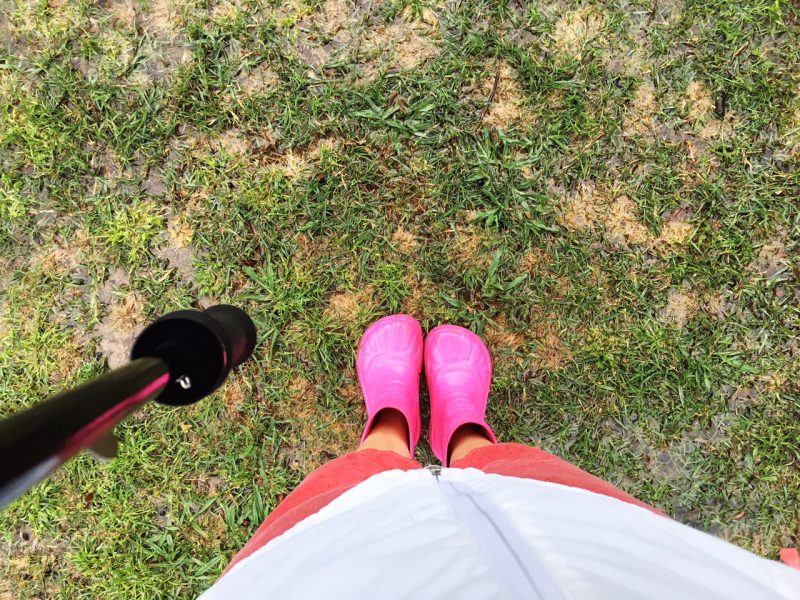
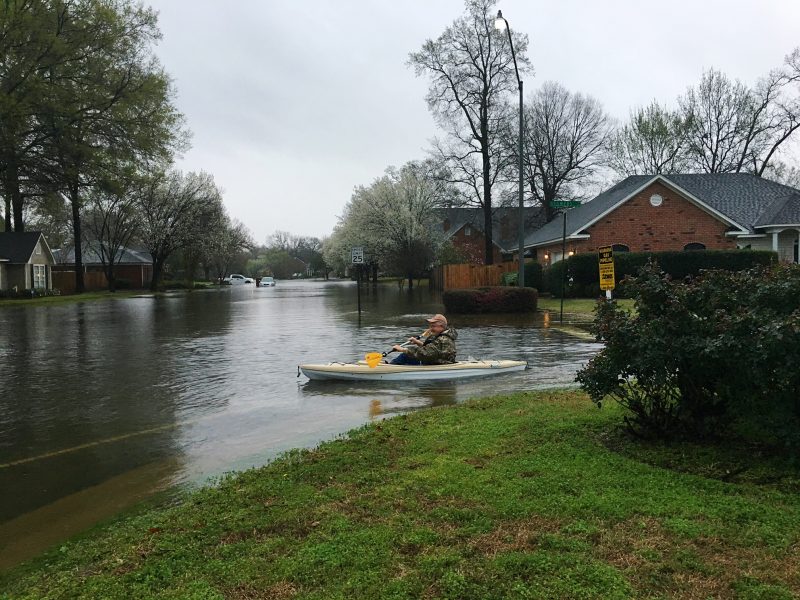 I tried so many times to write about the flood. I spread as much positivity as possible during that terrible time and I wanted to share what the roller coaster of emotions was really like. However, I never had the words. Honestly, I lost my voice entirely for a bit. I tried to write to make sense of things and I just didn’t have the words.
I tried so many times to write about the flood. I spread as much positivity as possible during that terrible time and I wanted to share what the roller coaster of emotions was really like. However, I never had the words. Honestly, I lost my voice entirely for a bit. I tried to write to make sense of things and I just didn’t have the words.
Tag Archives: flood
March 1, 2016
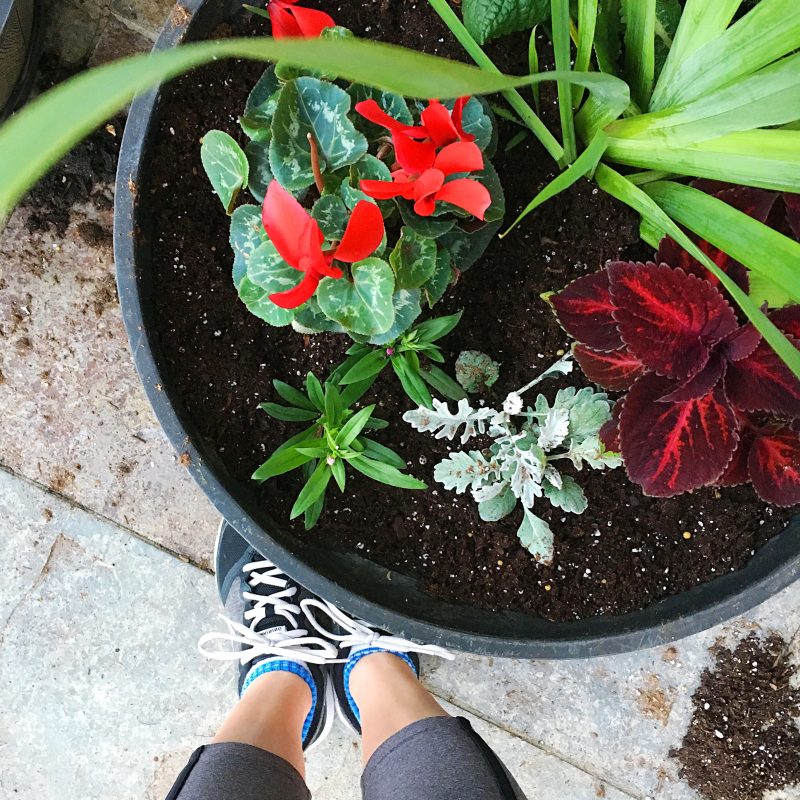 I stumbled upon what would have been a blog post for the first week of March 2016. I wrote this post just 8 days before our lives were turned upside down from the flood. I decided to share it today as an example of just how quickly everything can change. I would have never guessed that just a few days later, all my plans and ideas of what the month was going to look like would be entirely different.
I stumbled upon what would have been a blog post for the first week of March 2016. I wrote this post just 8 days before our lives were turned upside down from the flood. I decided to share it today as an example of just how quickly everything can change. I would have never guessed that just a few days later, all my plans and ideas of what the month was going to look like would be entirely different.
Why I Avoided Pinterest During our Remodel
 Let’s face the facts. We all love Pinterest. And if you don’t, I basically don’t understand you at all. So. Many. Cool. Ideas.
Let’s face the facts. We all love Pinterest. And if you don’t, I basically don’t understand you at all. So. Many. Cool. Ideas.
I’m a firm believer in taking time to get inspired and Pinterest is pretty much the best place to find inspiration, whether it be for your home, wardrobe, hobbies, or work. The ideas are endless and you’re bound to come across something lovely and fascinating. Many projects and ideas of my own have been sparked by something I saw on Pinterest.
That being said, I pretty much stayed off Pinterest entirely during this last remodel. One would think that this would have been the perfect time to be glued to the mesmerizing service, and yet I stayed far, far away from it. Why? Because it was too much.
I am known for becoming overwhelmed by too many options and during a time when I had to make decisions FAST, I simply wouldn’t have been able to process all of the options. I did look through things I’d already pinned to remember ideas I’d had in the past. However, I firmly limited my exposure to new information and options.
Furthermore, I wanted to make decisions considering what was best for our particular home and how we intend to use it. I didn’t want to be persuaded in different directions because of a gorgeous photo I saw online. Instead, I wanted to stand in the remains of our home and determine what felt right. How have we always imagined this place looking? What would make it more usable to us and be conducive to our everyday routines? I knew that if I saturated my mind with all of the ideas and options, I would not only be overwhelmed, I might also make decisions that weren’t best for us here in this home.
I once stumbled upon an article about why someone doesn’t watch Fixxer Upper and my initial thought was – how lame! I thought this person must be a jealous, unimaginative person if they couldn’t separate their reality from that of the show. How could you not still be comfortable with what you had just because you watched a design show?? How could you not use those ideas as little doses of inspiration for your own home? I just didn’t get it. And while our situations are very different, I suddenly felt the need to limit my own exposure to the beautiful homes of the world.
Rather than scrolling endlessly and trying to employ every single cute idea on the internet, I used Pinterest as a tool for accomplish specific tasks. When I decided I wanted blue cabinets, I searched specifically for blue cabinets in hopes that I’d stumble upon a color I loved. (No such luck, by the way.) As I mentioned above, I did look through my previous pins and I had a pretty legit bathroom board going. I pulled my favorites from there and we rolled with it. When I struggling with how to fancy up the fireplace, I searched specifically for flat fireplace walls and pulled only the items that made sense in my home. I used Pinterest for the amazing tool that it is and yet still limited my exposure because I had to.
As a result of my Pinterest strategy, I avoided some of the overwhelm. (Let’s get real. Doing all that we did in the time that we did it was still overwhelming.) However, I know with certainty that I would have blown my own mind if I’d have allowed myself down that rabbit hole. As things come together here, I allow myself back into the wild a little more each day. And I go use Pinterest for its intended purpose – to see pretty things and save ideas for later.
If you’d like to see my inspiration board for the remodel, go right ahead! I just made it public and there’s some pretty awesome stuff in there. Go ahead. Go spend an hour with Pinterest. Just kidding. We all know you’ll be there longer than an hour if you open that app. Happy pinning, friends! Feel free to follow me if you see things you like there.
Photo Source: Sarah Sherman Samuel
How to Help in a Flood (And Other Traumatic Life Events)
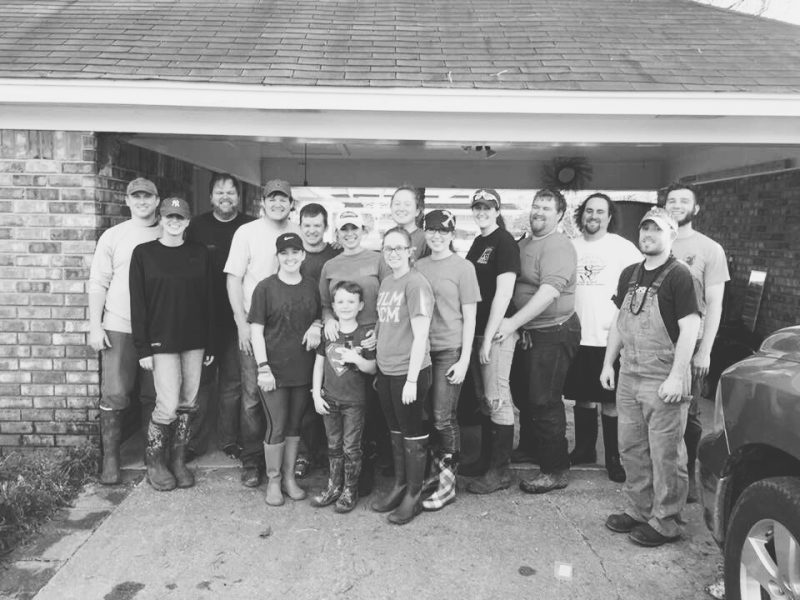 Below is a post I’d started regarding how to handle death/tragedy as an outsider, as a friend or acquaintance of the effected, or as a mere stranger who wants to help. Since sharing my post after the Baton Rouge flooding, I’ve been asked to come up with a list of things others can do to help. I left the original message intact and added this first portion of items that YOU can do to help in a flood or similar tragedy. Browse the list. See what you’re capable of doing. And offer a helping hand. Believe me, there’s no task too small and your good deeds will mean the world to those hurting. After browsing this list, continue to read my original thoughts below. These were written a few months after navigating our own tragedy and offer some insight on what to do AND what not to do.
Below is a post I’d started regarding how to handle death/tragedy as an outsider, as a friend or acquaintance of the effected, or as a mere stranger who wants to help. Since sharing my post after the Baton Rouge flooding, I’ve been asked to come up with a list of things others can do to help. I left the original message intact and added this first portion of items that YOU can do to help in a flood or similar tragedy. Browse the list. See what you’re capable of doing. And offer a helping hand. Believe me, there’s no task too small and your good deeds will mean the world to those hurting. After browsing this list, continue to read my original thoughts below. These were written a few months after navigating our own tragedy and offer some insight on what to do AND what not to do.
How to help:
- Gather tubs/boxes for them to pack in. If there’s items that can be saved, they’ll need something to pack them in. These aren’t usually items that come around on the donation trucks, so pulling together something to pack in could be very helpful.
- Help pack salvageable items. They need to save everything they can. Help them with this process, just be sure NOT to put anything wet into a box.
- Write down damaged items for them. As someone is cleaning out the damaged items, someone needs to make an inventory of what’s tossed for insurance purposes.
- Help with demo. The most obvious way to help is to help with the demolition. Wet furniture and belongings need to be removed. Carpets need to be pulled and sheetrock/baseboards need to be removed. Anything and everything that was touched by water needs to be removed for the house to dry properly. This job can be done by most, not just the strong ones. Carrying out pieces of sheetrock and baseboards isn’t as labor intensive as you might initially think.
- Wash clothing. Some of the wet clothing might be salvageable and even the dry items need to be laundered before packing away or wearing again. This job is great for someone who has to remain at home and isn’t able to do manual labor.
- Run errands. Most likely the effected need medications or toiletries picked up. They may need something taken to the post office, etc. Offer to run these errands for them because they likely need to be at the home or on the phone for now.
- Deliver food. During a major tragedy, there will probably be organizations delivering meals. If not, be sure they have something to eat, especially for lunch while they’re dealing with insurance, etc. After most of the volunteers start pulling out, this is a great way to continue to help.
- Give them somewhere to stay. If they don’t already have somewhere to stay for a few days, offer a room or extra property you have. They’ll need a few days or so to make permanent plans. Hotels are usually in short supply and they often don’t know where to go.
- Help with their business. Their work lives probably don’t stop because they’re facing this experience. If there’s a way you can help – taking care of clients, rescheduling appointments, etc. – do offer that. If they run their own business, they’re likely afraid of things falling apart during the toughest and possibly most financially unstable time of their lives. Do what you can to help them stay on top of work.
- Offer childcare. If they have children or pets, offer to take care of them while they sort through things.
- Give rides or offer up spare vehicles. If cars were flooded too, they’re very much so stranded. This adds to the helplessness and even if they’re allowed a rental via insurance, they’re very tough to come by in a major disaster when everyone else is procuring rentals too.
- Pick up supplies. A lot of cleaning items will be donated by organizations. However, there might be some specific items that are missing. Gloves for volunteers are a good example. Or raincoats if it’s still raining. Think of items that the Red Cross won’t be gathering and offer up those.
- Store items for them. Storage for what was saved is probably also in short supply. If you have extra space, offer that up as a way to help.
- Make suggestions for contractors, etc. They’ll need to make decisions quickly and if they don’t already have a network of home related individuals to pull from, they could use your recommendations.
- Offer opportunities from your network. If you know someone who provides a service or have connections at a place they need help from, pull those strings! We called in every favor we had in town during our time of need. If you have a connection to offer them, they’ll appreciate it.
- Go grocery/supply shopping. Once they’ve found temporary housing, they’ll need help getting it set up. They’ll be starting from scratch here so helping them stock the pantry and house will be helpful. Think salt & pepper, paper plates, bathroom and door rugs, towels, etc. Unless their temporary housing is fully furnished, they probably won’t have any of these items. You can even offer up items for them to borrow. Just be sure to write your name on it. They’re likely to forget what belonged to who amidst the chaos.
- Reach out. At a bare minimum, reach out to them. Tell them you’re thinking about them and that you hate they’re having to face this. Even if you don’t know exactly what to say, saying (and doing) something is better than nothing. If you don’t know where to start, share my previous post with them. Also, see below for things NOT to say.
- Show up. Once the shock wears off and support dies down, they’ll start to see things they need. They need both emotional and physical support. Seeing a friendly face who’s happy to pick up a snack on the way will mean the world to them.
 As Matthew and I experienced this flood together, we lost a lot. Lots of physical items, the safety and comfort of our home, sometimes our sanity and the overall quality of life and our marriage. Since the beginning of the process, I’ve compared this experience to that of losing a loved one. (Please note: if you just lost a loved one, I’m not at all saying that losing my favorite Antonio Melani pumps – along with thousands of other things – is the same as losing a person.) Instead, I’m saying is similar. If you don’t quite understand yet, let me explain further.
As Matthew and I experienced this flood together, we lost a lot. Lots of physical items, the safety and comfort of our home, sometimes our sanity and the overall quality of life and our marriage. Since the beginning of the process, I’ve compared this experience to that of losing a loved one. (Please note: if you just lost a loved one, I’m not at all saying that losing my favorite Antonio Melani pumps – along with thousands of other things – is the same as losing a person.) Instead, I’m saying is similar. If you don’t quite understand yet, let me explain further.
We went through the same stages of grief – denial, anger, bargaining, depression, and acceptance. There were some parts of the process in which we literally had to mourn. For months, we felt a sense of emptiness and incompleteness. Our worlds were shaken and turned upside down unexpectedly, and that simple fact left us in a state of chaos and grief for a long time.
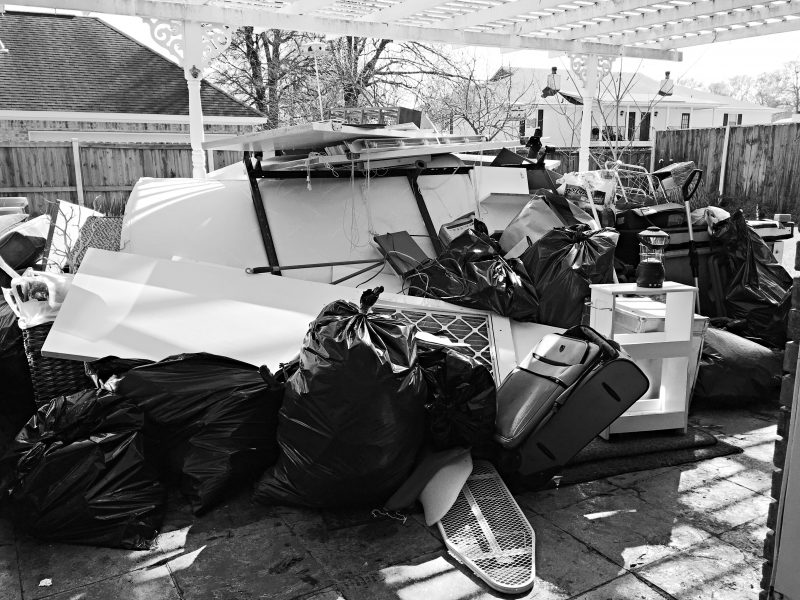 Over a year ago I came across this post about how to write a sympathy card and parts of that article have stuck with me since. Just recently I came across it again and was reminded of its good tips and point of view. I could also relate all of those back to this flood experience and thought this would be a good opportunity to share that post about sympathy and offer some suggestions on how to help a friend in need when you really don’t know what to do (as well as, a few suggestions on things to steer away from).
Over a year ago I came across this post about how to write a sympathy card and parts of that article have stuck with me since. Just recently I came across it again and was reminded of its good tips and point of view. I could also relate all of those back to this flood experience and thought this would be a good opportunity to share that post about sympathy and offer some suggestions on how to help a friend in need when you really don’t know what to do (as well as, a few suggestions on things to steer away from).
Let’s start with what TO do:
- Do something. This might seem obvious and yet it isn’t. Often times, we don’t know what to do to help in a time of loss or tragedy. It doesn’t mean that we don’t care – we just don’t know what the person needs. However, what will stand out to your friend is that you did something. We received many of the “if I can do anything, please let me know” messages, and we did appreciate the thoughts. The problem is, in a time of chaos and uncertainty, you really don’t know what you need. If you want to be there for your friend, just show up and do something. For us, we had people just show up to help us pack up what we could save and throw out the majority. They just showed up and it was the most comforting thing ever. We didn’t have to think, plan, or ask. They were just there. My suggestion to anyone wanting to comfort a loved one is to just so something. It doesn’t have to be anything huge. Show up with an icee, give them a hug, or just show your face so they can identify you as someone who cares. Bring take out, offer a night away from the craziness a few weeks/months later, bake cookies, run an errand for them…even the smallest of deeds will speak volumes to your friends. I promise. One of the main things that I’ll take away from this gruesome experience is that though we mean well saying “let me know what I can do to help,” they don’t know what they need. Just do something.
- Do realize that the pain and chaos doesn’t end that day or that week. Whether it be death or tragedy, it will affect your friends for months or years. The pain and heartache doesn’t go away after everyone else has returned to their normal lives. From experience, I know that it will mean the world to your friend if you check on them weeks or months later. After the initial shock dies down, most people return to back normal life and the effected is left still trying to figure things out alone. I remember the day the madness died down here. We’d been surrounded by friends and family helping. One day we woke up and the city had gone back to work. Friends weren’t here, volunteer crews had pulled out, churches were no longer delivering food, and it was the loneliest feeling you can imagine. Of course, we never expected to have support forever. The point I’m making here is that if you don’t know how else to help someone in need, watch for the new to wear off for everyone else. Watch for family to return home and people to stop talking about what happened. There’s a good chance that your friend is just now facing the reality of what happened and they could probably use a loving face to remind them that they’re not alone. Again, no one expects you to be a knight in shining armor and make the pain go away. Most of the time, just showing up and listening if they want to talk or unload is usually enough.
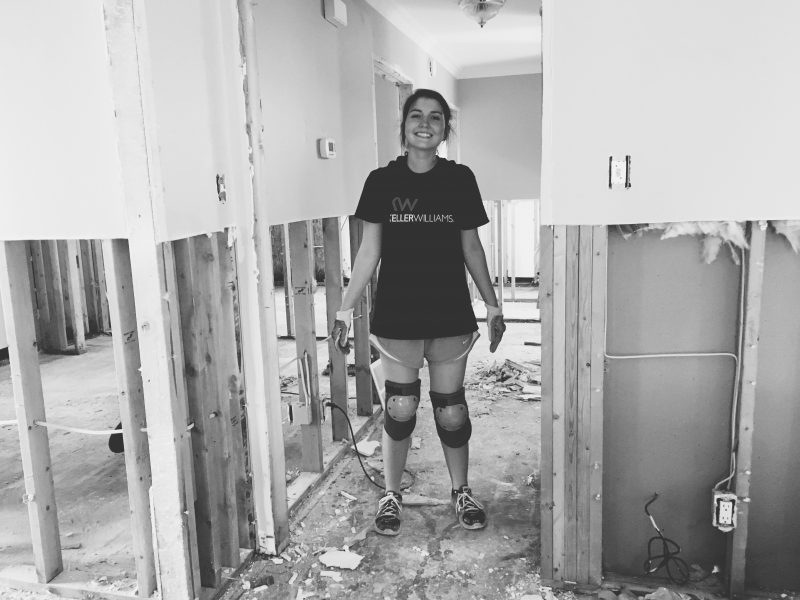 Now let’s talk about a few things NOT to do that might seem harmless at first glance:
Now let’s talk about a few things NOT to do that might seem harmless at first glance:
- Do NOT try to trump their story. So often during the process we got responses like “my aunt’s second cousin twice removed had 6 feet of water in her house.” Or even worse, “I know what you mean, my hydrangeas got so much water they’ll probably never bloom again.” Most of the time, people are just trying to make a connection and find common ground. However, telling someone that you know a story that’s worse than theirs can be a little insulting. And in the case of that second example, it might make them want to punch you in the face. In this situation, it’s definitely ok to share a similar story or show that you understand…just don’t belittle what’s happening to the person in front of you. The same thing often happens with death. Do your best to relate to the person without stealing the show. I often encounter this when a friend losses a loved one. I’ve had my fair share of experience with death so I definitely understand all of the emotions they’re feeling. However, this isn’t a time for me to tell my story of loss…it’s a time for them to tell theirs. My suggestion is to simply say, “I understand…I lost my dad to cancer too. It really sucks. Can I bring you a pizza tonight?” Leave it at that. Or, “Yes, I saw the crazy flooding and helped some friends move out. I have some extra towels you can borrow. Do you need those right now?” So many times during this flood, people would launch into stories they’d simply heard about people they hardly knew and while I always knew they were just trying to connect, it felt like they were competing with my story. And whether someone got two inches of water or twelve in their homes, I can promise it still rocked their world. It’s not a competition. We’re not trying to win. We all just want to survive.
- Do NOT say everything happens for a reason. Whether you believe this as truth or not, no one wants to hear that they just lost everything “for a reason.” When you’re in the throes of despair, the “reason” doesn’t matter. Whether you learn a lesson, become a better person, or end up better off in the end, the reason simply doesn’t matter when you’re hurting. Whether it’s a breakup, a death, or they’ve just fallen on hard times, don’t tell them it’s for a reason. Instead, tell them that they’ll make it through because they’re strong. Tell them that you hate they’re having to go through this. Tell them specifically how you can help (see #1). And then just listen.
- Do NOT ask “were they sick” or “did you have insurance.” It’s natural to sometimes let curiosity get the best of us. We want to know things and to understand. Even as outsider, we sometimes need to feel some closure and feel better because there was some preparation involved. However, regardless of whether their loved one was sick, or in our case if we had food insurance, the situation still sucks. Dismissing their struggle because they had insurance or knew it was coming, is very insensitive. In our case, most of the conversations happened like this: “aw, you flooded? That sucks. Did you have food insurance? Yes? Ok, bye.” I cannot even tell you how many times my feelings were hurt when people minimized what we were going through, simply because we had some insurance. Yes, that’s a relieving fact and something I’ll forever be grateful for. We still had to go through hell (and high water, ha) and I often felt disregarded simply because our story wasn’t as tragic as some others. Again, regardless of the topic, there’s someone’s story that’s always worse.
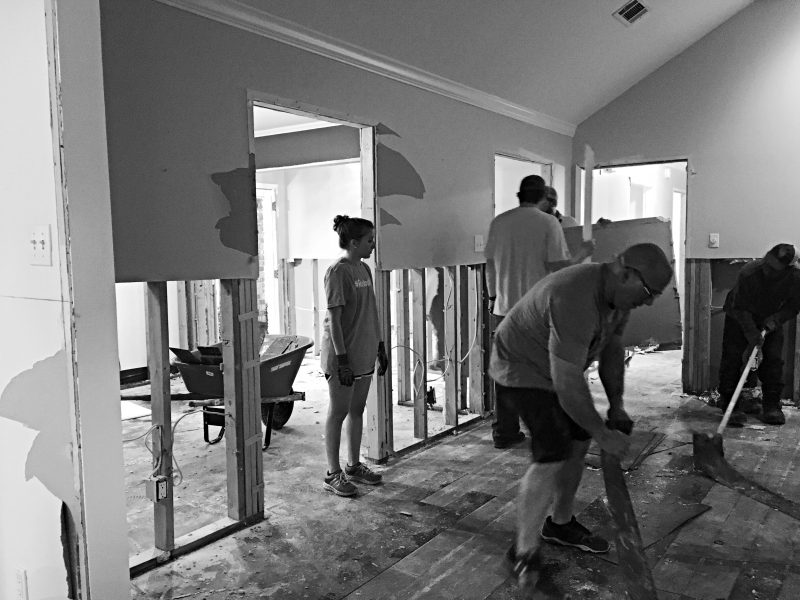 These few dos and don’ts are just suggestions based on my own experience and feelings. The second half of this post was drafed shortly after making sense of my own reality. We identified who showed up and who didn’t. We were met with a lot of unintended insults and could clearly see situations in which we, too, had committed these unintentional faux pas or should have done more to help someone. Gathering this list of “tips” helped me to process my own feelings on the topic and realize how I’d like to approach these situations going forward. Going forward, I won’t ask someone hurting to think of what I can do to help. Instead, I’ll offer specific things that I can do. And I’ll just show up. If anything, this experience has taught me how to be a better friend or a better stranger to those in need.
These few dos and don’ts are just suggestions based on my own experience and feelings. The second half of this post was drafed shortly after making sense of my own reality. We identified who showed up and who didn’t. We were met with a lot of unintended insults and could clearly see situations in which we, too, had committed these unintentional faux pas or should have done more to help someone. Gathering this list of “tips” helped me to process my own feelings on the topic and realize how I’d like to approach these situations going forward. Going forward, I won’t ask someone hurting to think of what I can do to help. Instead, I’ll offer specific things that I can do. And I’ll just show up. If anything, this experience has taught me how to be a better friend or a better stranger to those in need.
If you have learned other things from similar experiences, please leave a comment! I think we’d all like to be better friends and to know what to do when tragedy strikes with or without warning. Please share your thoughts! And please reach out and encourage those who are still struggling!
What To Do After a Flood
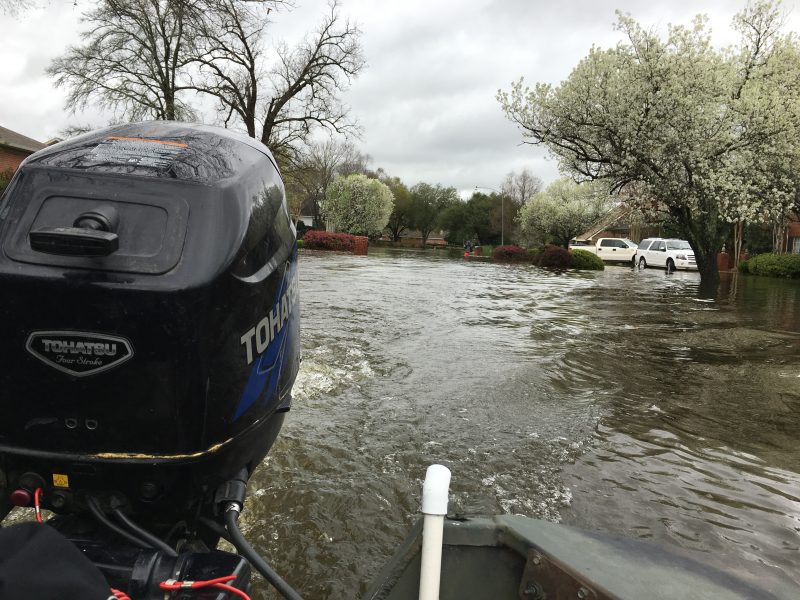 Right now a large portion of South Louisiana sits under water. Just mere months ago, North Louisiana experienced the same trauma, and even though Matthew and I have made it through the hardest parts, the pain/fear/uncertainty/stress still feels fresh. A few weeks into the rebuilding process, I joked that I could now write a manual on “what to do in a flood.” Now, when so many of our friends are suffering through the same things we did, the idea struck that I should actually jot down a few pointers from our experience. Keep in mind, every situation/insurance and mortgage company is different, so these tips are based solely on our experience and could vary based on each individual situation.
Right now a large portion of South Louisiana sits under water. Just mere months ago, North Louisiana experienced the same trauma, and even though Matthew and I have made it through the hardest parts, the pain/fear/uncertainty/stress still feels fresh. A few weeks into the rebuilding process, I joked that I could now write a manual on “what to do in a flood.” Now, when so many of our friends are suffering through the same things we did, the idea struck that I should actually jot down a few pointers from our experience. Keep in mind, every situation/insurance and mortgage company is different, so these tips are based solely on our experience and could vary based on each individual situation.
Here’s what we did:
- Start a “flood notebook.” You are about to be bombarded with information, phone numbers, policy numbers, deadlines, etc. and you’ll want all of that information in one place. My flood notebook was attached to me at all times during the first 3+ months and every bit of information was kept there.
- Contact your insurance company. If you have flood insurance, file a claim immediately. With a disaster of this nature, insurance adjusters will be swamped and you want to get on the books ASAP. If your cars were damaged, you’ll need to file separate claims for those. (Remember to be nice to everyone you speak to. They want to help you.)
- Contact your mortgage company. If you have a mortgage on the property, you’ll need to let the mortgage holder know. They’ll be a part of the rebuilding process and you’ll most likely have to run funds through them to rebuild. Also, they’ll possibly delay your house payments for a few months to help out until you sort things out. (Be mindful that these payments will probably all become due at the end of the delay period. They’re most likely not doing away with those payments – just delaying.)
- Register on disasterassistance.gov. We did not register with FEMA at first because we thought they wouldn’t help since we had flood insurance. That’s not true. Register anyway. There’s most likely things your insurance won’t pay for and FEMA can help with that. If you do not have flood insurance, register right away!! This will most likely be your best form of assistance.
- Take lots and lots of photos. Hundreds. Thousands. You can’t have too many. Take photos in all rooms, from all angles. Inside closets. Inside cabinets and drawers. YOU CANNOT HAVE TOO MANY PHOTOS.
- Find a more permanent place to stay. We were overly ambitious and thought we’d be back home in 3-4 months. We were home before most of our neighbors/friends and it still look way longer than expected. You’re about to be stressed to the max and pushed to limits you’ve never been before. Find a place to retreat. My suggestion would be to plan for something stable for at least 6 months. This way, you’ll be less stressed when you experience delays or bumps in the road.
- Delay/pause your excess utilities. You won’t be using a lot of your excess things like cable, internet, alarm services, etc. for a bit so if you can, pause or cancel those temporarily. Some will be great about this, some won’t. Just save where you can. For internet, for example, it didn’t make sense to cancel so we just dropped it down to the very basic plan. Our alarm company let us disconnect and easily reconnect when we were back home.
- Call your cell service provider. If you begin to run low on data/service, you can call and ask for help. Once the area is declared a natural disaster, some providers will extend your limits for the month so you’re able to make those important calls, etc.
- Write down people to thank in your flood notebook. I kept a running list of those who helped so I could thank them when things settled. (I still have some cards to send.) There is no possible way you’ll remember everyone so start writing down names immediately. And believe me, you’ll want to thank those people. These people will literally be your heroes.
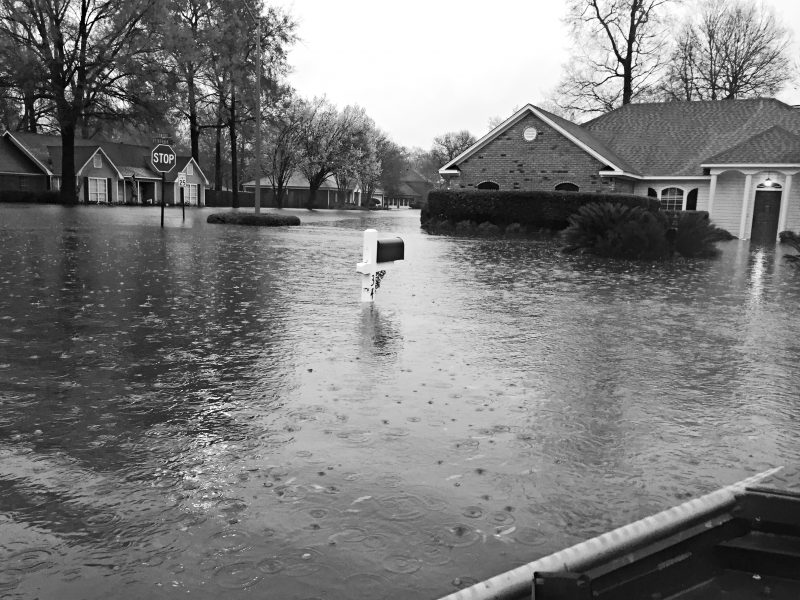 Once the water is out of the house, here’s some things to do next:
Once the water is out of the house, here’s some things to do next:
- Take more photos. If you took photos while the water was inside the house, take more with the water gone. Be sure to document any visible water lines. Again, be sure to get inside all cabinets and drawers. You want a record of everything in the house.
- Remove any and everything that is salvageable. If it is dry, pack it up and find a place to store it. This is very important – DO NOT PUT ANYTHING EVEN REMOTELY DAMP INTO A BOX WITH DRY ITEMS. If you do, you’ll have lost everything in the box by the time you’re able to unpack it. If you think clothes can be saved, launder them immediately. Remember, it’s not just rain water you’re dealing with here. If it’s dry, get it out immediately and keep it separate from anything wet. If it didn’t get touched by water, insurance probably will not cover it. Save it if you can.
- Pull anything wet out outside. You want to get everything out that’s holding water. Carpet and rugs need to be pulled ASAP. They hold water in the house, so remove them as soon as possible.
- Make note of EVERYTHING, big and small, that’s tossed. As you take something out, write it down. I bought several yellow notepads and some of the girls helping us stood by the doors, making note of everything that was tossed. This will be a LIFESAVER when you go to inventory things for insurance. The more pictures and notes you have, the better. You’ll want to write down the model/serial number of appliances and the other can be general notes…anything that helps trigger your memory of what the item was. It would also help if whoever is writing in that notepad would include their name. That way, if you have questions later, you’ll know who to ask. Also, know how many notepads you have going so you can be sure one doesn’t get misplaced.
- If there’s furniture that you think you can save, clean it immediately, especially before you put it into storage. If it’s upholstered or cloth, it’s probably not salvageable. If it’s cheap furniture or not real wood, you should probably toss it. Anything that’s real wood (antique furniture, etc.) might survive if you clean it and get it dried out immediately. We wiped everything single thing that we thought could be saved vigorously with Lysol/Clorox wipes and let it dry before storing it. Some survived. Some didn’t. Again, be careful storing anything wet because it could ruin everything around it. NOTE: Some real wood items might have faux wood backs, etc. If so, rip those off and try to save the rest. You can add a new back later. Just clean it really, really good.
- If you don’t have a dumpster, make piles within 10 feet of the edge of the road. It’s going to be a while before they can pick these items up, so put them as far out of your way as you can. If you have someone with a trailer or dumpster, these are good options too. If not, make piles close enough to the road that the trash collectors can legally pick it up and far enough back that it won’t fall into the road.
- Begin pulling out sheetrock/insulation. The amount of water you had inside will determine how much sheetrock needs to be removed. Usually, it’s done in 2 or 4 feet increments. It’ll be easier to replace that way. At a minimum, pry away the baseboards. Usually, there’s a gap at the bottom of the sheetrock that’ll allow air to start flowing within the walls. If there’s not a gap or you can’t remove baseboards, knock holes along the bottom of the sheetrock with a hammer. This will allow some airflow. If you’re doing demo yourself, wear gloves. Get gloves for anyone helping you. Pull up flooring, pull out sheetrock, wet cabinets, appliances, etc. Note: It’s ok to do these items before the adjusters come AS LONG AS YOU’VE TAKEN A TON OF PHOTOS. Some people are afraid to start and there’s actually probably a clause in your insurance policy somewhere that says you’ll do everything you can to “maintain the integrity of the home.” In this case, it means getting it dry ASAP. The insurance company will be very unhappy if you simply leave it until the adjuster comes and you’ll only cause more problems that way.
- Hire a professional water remediation specialist. These folks will be swarming your area soon and a lot of them do demo too. We used Clean Master and Service Master is another good one. They’ll professionally dry the home once it’s demoed and treat the studs etc. for mold. You’ll want to hold on to the “dry logs” they provide you because insurance will want them and they’ll be handy when/if you sell the home in the future.
- Accept help. There will most likely be church groups and volunteers everywhere offering help, food, or supplies. This is not the time to be prideful. These people want to help. Let them. You’ll need strength later, I promise. (Just remember to make a note of who helped in your notebook.)
- Choose a good contractor. Your mortgage company will most likely require a licensed contractor to oversee the reconstruction. Pick a good one. The good ones will book up fast, so call as soon as you can. Ask around for suggestions. Listen to reviews. Be sure not to choose a crappy or unreliable contractor.
- Be wary of poachers and scammers. Within hours, you’ll notice people scoping your trash piles and offering services with hand-written business cards. Accept help from others, yet be cautious of people just trying to make a buck from a bad situation. Don’t leave valuables outside, especially not near the trash pile. You might also have investors make offers on your property as-is. This isn’t always a bad deal…just be sure you aren’t taken advantage of. If you have questions about this, contact me.
- Save all receipts. All of them. Anything you buy or pay for right now should be documented. In addition to my flood notebook, I bought an accordion file to keep all paperwork in one spot.
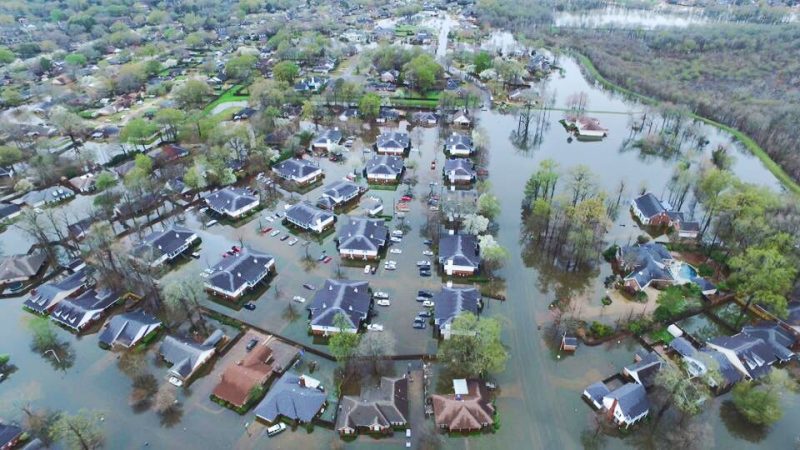 And a few more practical/sanity related tips:
And a few more practical/sanity related tips:
- If you’re not attached to an item, do not save it. Now is not the time to save anything that doesn’t mean something to you or than you don’t need. Storage will be scarce and once you’re ready to move back in, you won’t want to clutter your new, pretty home with old junk. If it’s damaged or if you don’t love or need it, get rid of it now.
- If there’s an area of the house or items that are important to you, have someone close to you work in that room. My closest friends/family worked in my closet because they knew better how to handle those personal items. They also knew to just toss what was ruined without me seeing it (after writing it on the damaged inventory) because that was easier than me having to face that item at that moment.
- If photos got wet, pull what you can apart gently and lay them out to dry ASAP. They won’t be perfect, but you might can salvage some this way. I also had friends help with this task so maybe I wouldn’t even remember photos that had to be tossed.
- And possibly most importantly, remember that this sucks and it’ll be really, really tough. However, IT’S TEMPORARY. You won’t have to live this way forever and someday things will level back out. I think that the only way I kept my sanity is by constantly reminding myself that I can handle anything for a limited amount of time, and this nightmare is just temporary. As with any situation, it is what you make of it. It sucks and if you let yourself wallow in that, you’ll only make the process worse. It can be positive or negative…you decide your outlook.
- When the new wears off and the volunteers go back to work, you’ll feel the most alone you’ve ever felt in your life. However, there’s a group of us out there that will be constantly thinking about you and cheering you on. I’ll be constantly thinking about you and cheering you on. And I know that you’ll pull through. You’ll come out on the other side with a new perspective on life and you’ll feel invincible. I promise.
These steps are not something I worked on for weeks and I haven’t even proofread. The thought just came to me to share my tips in case it helped just one person find their way in this tough time. I wish I had someone to reply on for instruction when this tragedy first happened to us. If you have questions, feel free to ask. I’m happy to help in any way that I can!
I haven’t shared much yet, but you can find some of our story here or check the #100daysofrebuilding hashtag on Instagram. If you’re struggling today, know that I feel your pain and I’m on this journey with you.
Much love, Pamela
EDIT 8/19/16:
Call the tax assessor. This isn’t something that needs to be done right away. However, make a note to call them when you have time. They’ll keep a tally of damaged homes and this is how they’ll determine whether tax breaks can be given for the year. (Thanks, Madeline, for this reminder.)
*These thoughts and suggestions are all my own. I’m not a professional, nor are these hard and fast rules. This is just my experience and what I did to survive it.
**The last, overhead photo was taken via drone by a neighbor.
The Fear of the Tunnel
 The house (read: temporary duplex) is quiet around me. It’s somewhat of a somber day, cloudy with very little sunshine coming through the windows. I’m half way through my cup of coffee have a general plan mapped out for the day. I find myself lingering at the table, knowing that I should start getting ready for the day. Something holds me in my seat. Something other than laziness. I just don’t feel like the morning is finished. I decide to try writing, something that once felt like a regular part of my morning routine and now feels a bit foreign and unfamiliar.
The house (read: temporary duplex) is quiet around me. It’s somewhat of a somber day, cloudy with very little sunshine coming through the windows. I’m half way through my cup of coffee have a general plan mapped out for the day. I find myself lingering at the table, knowing that I should start getting ready for the day. Something holds me in my seat. Something other than laziness. I just don’t feel like the morning is finished. I decide to try writing, something that once felt like a regular part of my morning routine and now feels a bit foreign and unfamiliar.
Usually when I write, I have a particular goal in mind. I’m going to flush out a story or share some sort of self-discovery. I determined a bit ago that writing is what I do to clear my mind and process my thoughts. I usually do this writing via an app on my iPhone so that I can curl up somewhere comfortable. Today, I bring the laptop to the table. I suppose I feel the need to call more attention to this time. I need to do something to force the words out of me.
I haven’t written freely in months. Before the flood, I wrote something nearly every day and shared a post on the blog twice a week. Like clockwork. I hadn’t missed a Monday or a Thursday without a post. The rest of the writing just lived there on my phone, either to later be merged into something else or to just live there and maybe be reflected on later. Since the flood, I’ve posted here a couple of times and nothing other than a few mere paragraphs have been forcefully put into that iPhone app. I’m nearing three months of not writing regularly. It’s no wonder that my mind feels a little clogged and confused.
So today, realizing that this therapeutic habit of mine has both unintentionally and intentionally been abandoned, I sit down to write. It feels a little foreign and yet like home at the same time. I’m able to string together sentences more easily today than I was a month ago. Still, the sentences seem to have no purpose. Nonetheless, I continue to write. Maybe a purpose will come. Maybe it won’t. Either way, I need to get reacquainted with the thoughts in my head. I need to be reintroduced to my true self. Myself before the chaos ensued.
I think back to a photo I took in Kiroli Park. I believe this area of the trail is called the Swamp Walk and a tunnel of sorts presents itself along the path. I’ve found great therapy on these trails lately…walking both casually and with fever for exercise. I listen to podcasts and unplug from the world around me for a bit. Being in nature has always centered me, and I’m thankful to have Kiroli Park to help diffuse the chaos right now.
Back to the tunnel. I snapped a photo of the tunnel, as I’ve done practically every other angle of the park. And today, as I think of that photo, I conjure up a bit of symbolism for where I am today. I think I even made reference to a tunnel in one of my last posts. I see myself standing on the outside of this tunnel, knowing that I want to go on through, but maybe being afraid to take those first steps. The tunnel at Kiroli Park obviously isn’t dark and scary, but for now it’s serving as an example. Right now, as we’re wrapping up the last few weeks of the rebuilding process (hopefully), it feels a little scary. I know that by simply taking the steps and pushing through the dark tunnel, we’ll come out on the other side. However, I’m afraid of what might be waiting just outside those tunnel walls.
Within the next few weeks, our vision for the rebuild will come to life. Good or bad, it will become a reality. Within the next few weeks, we’ll retrieve what we saved from storage to finally know what we were able to salvage and what we weren’t. Within the next few weeks, we’ll have to come face to face with the quantity of what was lost. Or what was damaged in the hurried move. And within the next few weeks, if our home doesn’t actually get “finished,” we’ll be homeless again.
As I sit here, writing about seemingly nothing, I realize that while I’m eager to be home again, I’m also afraid to step into that tunnel of the last stages. I’m afraid of everything listed above and in the back of my mind, I know that some of the hardest struggles of this process are still yet to come. So I resist the tunnel a bit. Even though I want to walk through, I find myself standing forcefully on the other side…just needing a little push to go forward. I need to shift my thoughts to the positive ones. I need to focus on the good. I need to be brave instead of fearful. I need to take one, tiny step at a time and just go. I can’t actually delay the passing of time or reframe reality, and I don’t even want to. I just need to move. I think that’s how you survive in life, after all. You bob and weave, dodging the punches and you move. You can’t stay still. It’s in the stillness that the negativity will consume you. You just push forward, no matter how badly you want to stop. And that’s why today, I’ll begin that journey through the tunnel in my mind. And within weeks, I’ll be on the other side, facing a new reality.
Breaks & Breakdowns
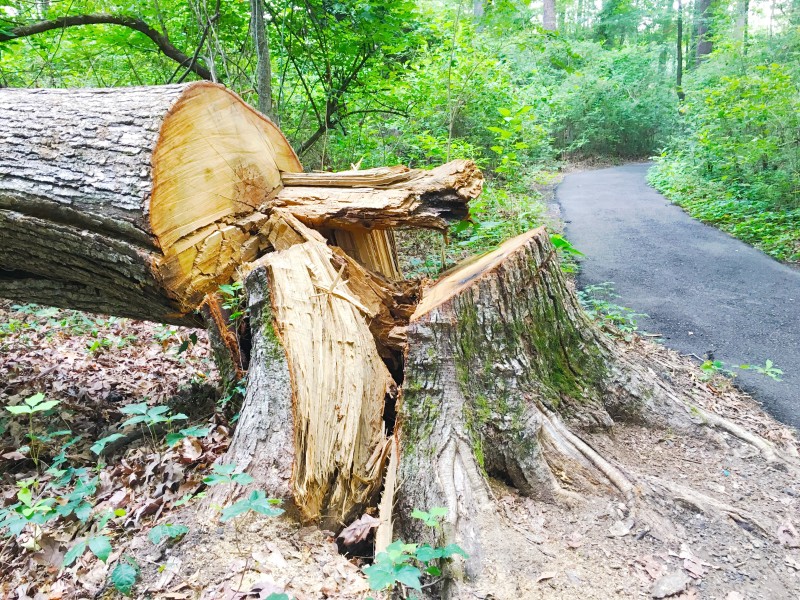 Last week it happened. I broke down. Like ugly cried all day, waved my hands around in frustration, and complained to my husband about life (and people). Any sane person could see that it was bound to happen. We’re out of our home and routines. We’re rebuilding, which comes with its own headaches. I feel like every other day I’m afraid that I might be homeless again. I’m working like a mad woman, definitely not utilizing my team enough. I’m negotiating what I swear are some of THE hardest deals of my entire career. I put a booth in an antique store and bought an investment property that needs just as much work as our home. Just to name a few.
Last week it happened. I broke down. Like ugly cried all day, waved my hands around in frustration, and complained to my husband about life (and people). Any sane person could see that it was bound to happen. We’re out of our home and routines. We’re rebuilding, which comes with its own headaches. I feel like every other day I’m afraid that I might be homeless again. I’m working like a mad woman, definitely not utilizing my team enough. I’m negotiating what I swear are some of THE hardest deals of my entire career. I put a booth in an antique store and bought an investment property that needs just as much work as our home. Just to name a few.
Clearly after a day of riding that emotional rollercoaster hard and fast, I knew something had to give. I didn’t want to give up any of my projects, so I decided to make a few small changes instead. Here are a few, in case you need to practice better break-taking too:
- I’m not carrying my phone with me to the bathroom. I have quite a habit of carrying my phone everywhere I go. Especially the bathroom. My reasoning is that I can use the time walking back from the bathroom to respond to texts and emails. That might seem like a productivity trait. However, here’s what happens. First, if I’m looking down at my phone as I pass by all of the offices and real people along the way, I miss them. I barely say hello. I don’t ask about their lives. I don’t pause for conversation about new listings or troubleshooting in negotiations. I surely don’t offer help. I’m a busy lady! Secondly, if the phone rings while I’m in the bathroom, I legit try to pee faster so I can answer it before it goes to voicemail. That’s nuts. State labor laws mandate that employees get a certain number of breaks per day as well as a true lunch break. (What?! Is that real?) I don’t even give myself 3 minutes to walk to the bathroom! For now, I’m giving myself that time. I understand that I’ll come back to 25 unanswered text messages. However, I’m gaining 3-5 minutes of peace. Sign me up for that.
- I must find time to relax and hobbies that aren’t directly related to my work. Both fortunately and unfortunately, the things I enjoy doing are very closely related to my “work.” Therefore, during my down time, whatever I find myself doing can easily cross over from down time to work and next thing I know, I didn’t clear my mind or rest at all. I think I’m learning that I don’t actually know how to “rest” at all and that I don’t have any hobbies that allow me to truly relax. Not good. And I don’t even know where to start with figuring that one out. Any help?
- I will take days (or at least half days) off where I transfer my calls and delegate out my texts and emails. Since I use my personal cell for work, my work can easily follow me everywhere. Even to the bathroom (see above). The fact of the matter is, I have a well-trained team of professionals who can troubleshoot and handle business, just as well as I can. I pay two full-time salaried folks to help me. I simply MUST unplug and allow them to do their jobs (and mine) every now and then in order to actually get a break. Otherwise, I eventually become a hot, crazy mess. I finally took an actual day off and it was the most amazing thing ever. Better than my birthday. I feel like a brand new person. I’m inspired, rested, and eager to work. Doesn’t that sound awesome?! It feels awesome.
- I need to set clearer boundaries, both for myself and for others. For example, I’m not available to chat real estate at midnight. I’m not going to answer a contractor’s question at 5:50 am. For most people who only share their office phone number, they would only get these messages between their regular office hours and everything else would just have to wait. They’d be at home watching Game of Thrones, oblivious that their office phone was ringing off the hook. Since I give out all of my contact info, folks can track me down at all times. This means, I never get to turn my work brain off. I don’t get to unplug or rest. I need to practice setting more clear boundaries and holding myself accountable to those. I can be accessible without being a slave to my work and my phone.
As I write this I immediately see 1,000 ways that I’ll cheat. It’s so easy! And most of the time I even want to. I do not, however, want to lose and entire day of productivity recuperating from not taking a break. Seriously guys, I’m the worst boss of myself possible. I’ve written a few things on this topic that I haven’t shared and maybe I should get around to that. Also, something similar here and here.
Clearly, this is an ongoing struggle for me. I’ve read several articles about set break time and rejuvenation. I already understand the importance. I just don’t do it. Anyone else struggle with this? If you have some tips for doing better, I’m all ears. You can leave a comment, email me, or call me after midnight. Kidding. Don’t do that last one. I’m setting boundaries now.
Cabinets
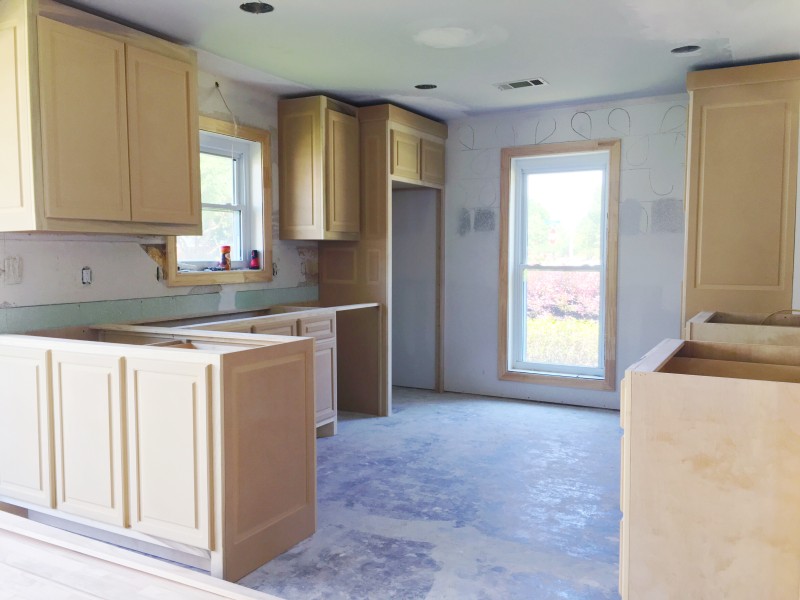
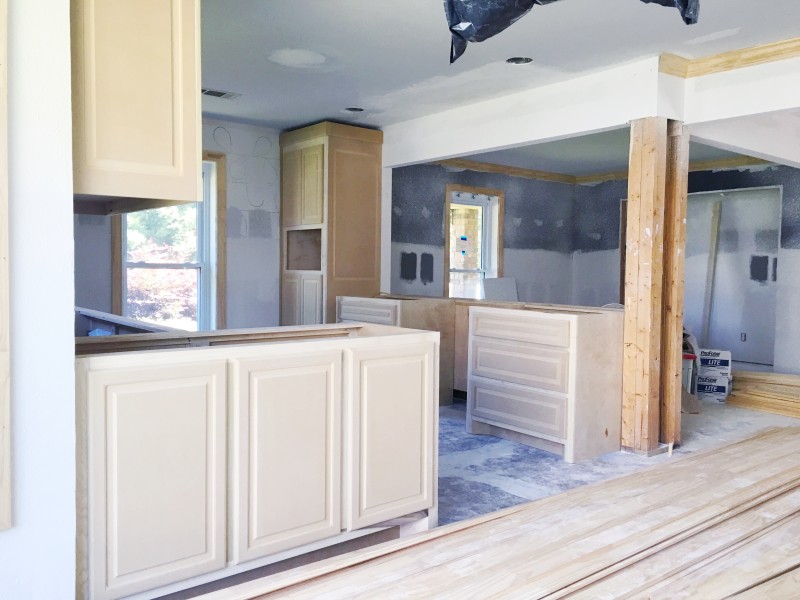
 I alluded to the fact that I’d write more about the flood and I honestly assumed that would have already happened. I have several sentences marked down here and there documenting my feelings and experiences of the last two months. However, nothing feels complete and honestly, I feel as if I haven’t been able to fully draw out what I’ve experienced lately because of the roller coaster of emotions I’ve been on. There have been highs and very lows and stress, something I avoid like the plague, has set up shop in my life and it’s been a constant battle for me to live despite that fact.
I alluded to the fact that I’d write more about the flood and I honestly assumed that would have already happened. I have several sentences marked down here and there documenting my feelings and experiences of the last two months. However, nothing feels complete and honestly, I feel as if I haven’t been able to fully draw out what I’ve experienced lately because of the roller coaster of emotions I’ve been on. There have been highs and very lows and stress, something I avoid like the plague, has set up shop in my life and it’s been a constant battle for me to live despite that fact.
Then, cabinets were a game changer. We’ve had two major delays throughout this process and those were getting doors and cabinets. These two items alone blew a hole in my overly ambitious plan to be back in my home by May 30. Both were also completely out of my control which caused its own set of emotional struggles. Even though I knew the “hard times” were so, so temporary, I still found it difficult to stay positive (and not wildly frustrated) at times. It was often very hard to see the light at the end of the tunnel without secretly fearing it was a train.
Then, on Tuesday, May 10th our doors arrived. Unloading them from the trailer offered a glimmer of hope that we might be making progress after all. Just three short days later, our cabinets were delivered and installed. Seeing those cabinets sitting in their well-designed spot in the kitchen, was a major game changer for me. I wrote on IG that I could have hugged the cabinet guy and laughed/cried/danced about. It felt like I’d been waiting a lifetime to see those cabinets and to behold them in all their freshly-crafted glory felt like my own silver lining. I suddenly felt like we would make it. We would someday finish rebuilding and get to live in our home again. The decisions I’ve been making on the fly without as much consideration as I’d like, were turning out ok. We would be done with this living nightmare soon.
I would have never guessed that cabinets could cause such a transformation in my mood, though I’m beyond thrilled to have switched to a more positive mindset. I don’t thrive well in negativity and worry had undoubtedly consumed me. I felt lost and like I’d never find my way again, even when my rational mind insisted that I would. Now, with cabinets and a few doors hanging on their hinges, I see the light at the end of the tunnel. And I know it’s not a train. Instead, it’s the sunshine that’ll be pouring through my windows as I settle back into my new, old home. It still feels like a distant dream, though suddenly I’m rejuvenated enough to finish the fight.
P.S. If anyone is looking for an amazing cabinet maker, Matthew and I highly recommend Bailey’s Custom Cabinets. Jimmy Bailey was very attentive and took notes (something most don’t even take the time to do). He asked lots of questions, making sure to understand our goals. Even more importantly, he delivered what he said he would deliver, every single time WHEN he said he’d do it. He has by far been one of the most pleasant and least frustrating people to work with during this progress. And our cabinets look and feel awesome.
Renovating a House From Top to Bottom – When You’re Not Expecting To
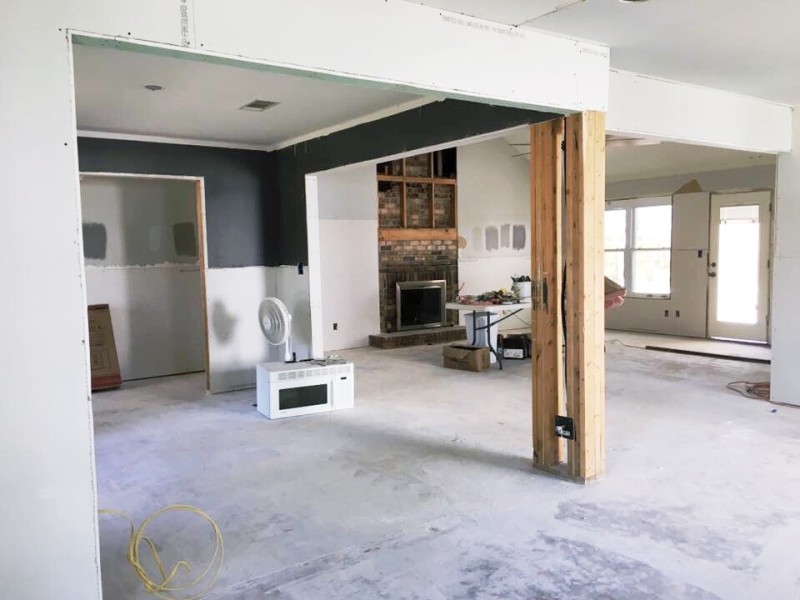 I basically love everything house related – design, décor, renovating, color schemes, furniture – you name it. I’m even a realtor for heaven’s sake! Since I can remember, I’ve dreamed about redoing whatever space I was in and planned excessively for that. Since I’ve never had an endless budget to rehab each space to it’s maximum potential, I’ve always lived in a state of “make it work” vs stretch everything to its max potential.
I basically love everything house related – design, décor, renovating, color schemes, furniture – you name it. I’m even a realtor for heaven’s sake! Since I can remember, I’ve dreamed about redoing whatever space I was in and planned excessively for that. Since I’ve never had an endless budget to rehab each space to it’s maximum potential, I’ve always lived in a state of “make it work” vs stretch everything to its max potential.
This house was no exception. We did a ton of renovations before we moved in to make the house livable for us and work with our lifestyle. Then, I settled into months and months of deciding what were the best projects to spend our money on. Of course, I had a dream list of things I’d looooove to do to our home. And then there was the list of upcoming projects that were more reasonable that we’d tackle as funds and time became available. (I actually had that list ready to share with you guys in March.) Then the flood hit and it basically changed everything.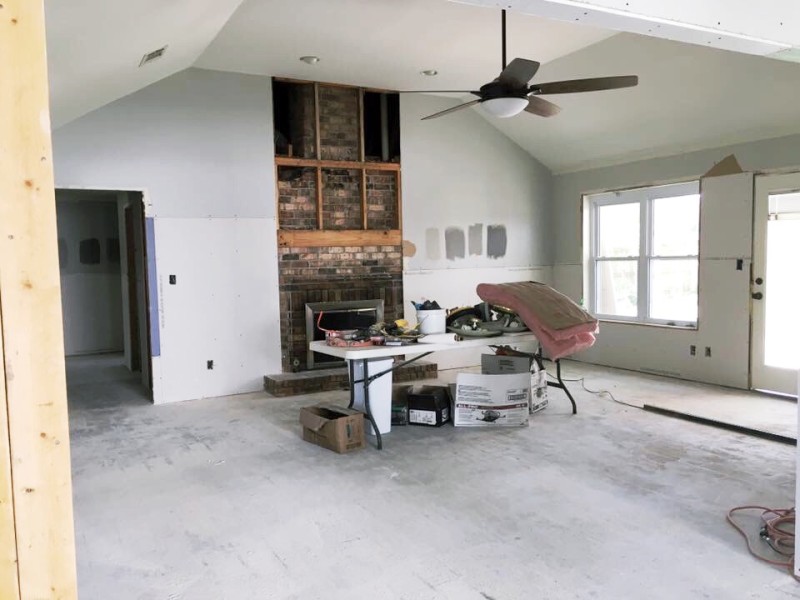
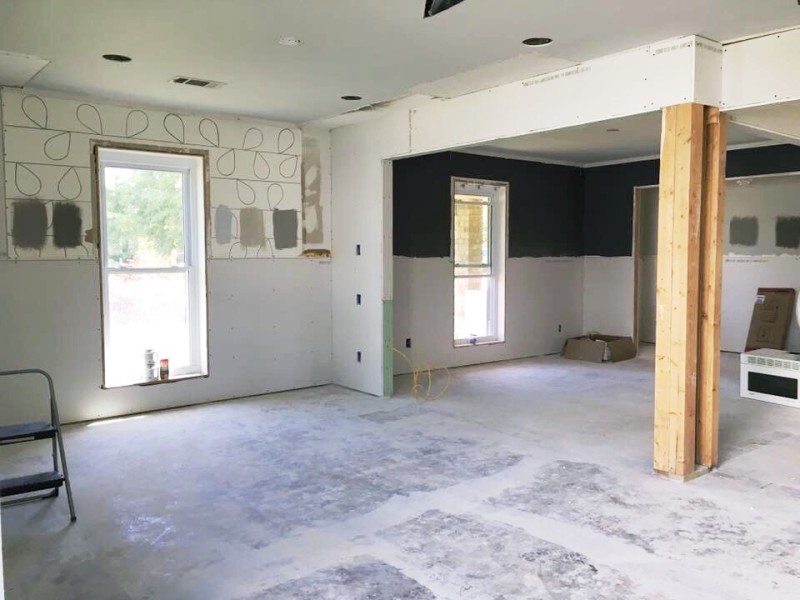 We spent the last year working to get the inside to a good place. We’d just had several conversations about being settled enough with the interior to begin work outside. We had several projects lined out for the exterior, and actually planned to begin work on the landscaping (finally!) the weekend that the flood hit. Now, rather than following our original trajectory, we’re having to start over.
We spent the last year working to get the inside to a good place. We’d just had several conversations about being settled enough with the interior to begin work outside. We had several projects lined out for the exterior, and actually planned to begin work on the landscaping (finally!) the weekend that the flood hit. Now, rather than following our original trajectory, we’re having to start over.
What does that mean exactly? It means a lot of things. First, we’re having to redo all of the work we’d already done. Our house was destroyed completely from 4 feet down, so everything we’d already lined out – flooring, paint, furniture, etc. – had to be demolished/discarded and redone. Secondly, the plans we’d made need to be reevaluated as things are all shaken up now. Even though our intention was to focus our energy on the exterior this year, we need to adjust and put out focus back on the interior for now. Obviously, we want to get to live there again ASAP. Also, with our house being basically demoed, it was a good time to reevaluate previous decisions and the overall layout and functionality of the home. If we were going to change anything, now was the time to do it.
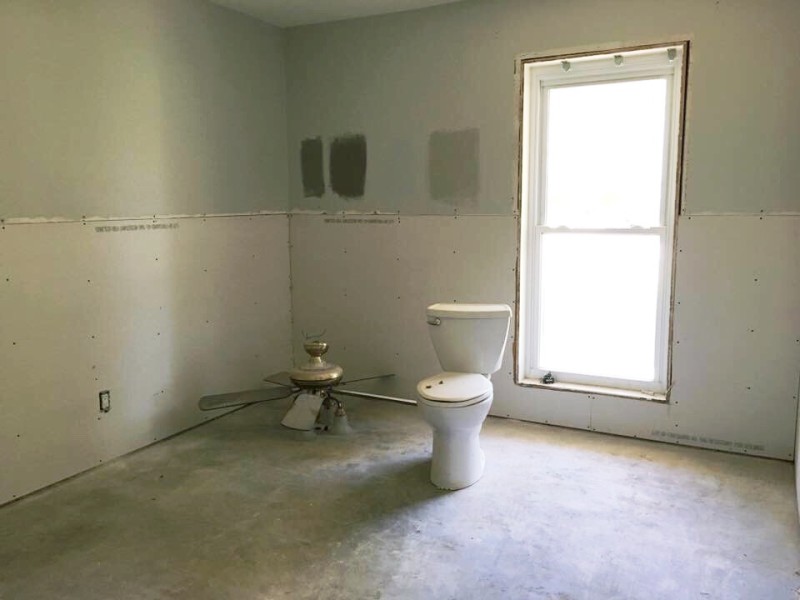 Since I had a few ideas already, some of the decision were easy to make on the fly. However, the way I handle practically any decision is to consider every single possibility and look at every option. Then, I take some time to process the options, considering all pros and cons, and finally make a decision after much deliberation and discussion among my closest confidants. The trouble with the strategy here is that I need to make the majority of the design decisions quickly…like yesterday…so that work can happen quickly and we’re out of our home for the shortest time possible. This is not conducive to my normal way of doing things.
Since I had a few ideas already, some of the decision were easy to make on the fly. However, the way I handle practically any decision is to consider every single possibility and look at every option. Then, I take some time to process the options, considering all pros and cons, and finally make a decision after much deliberation and discussion among my closest confidants. The trouble with the strategy here is that I need to make the majority of the design decisions quickly…like yesterday…so that work can happen quickly and we’re out of our home for the shortest time possible. This is not conducive to my normal way of doing things.
When you’re planning for a major renovation or building a new home, I feel like it’s a lot easier to be prepared for all of the decisions and information that’s coming your way. At a minimum, most people will have planned for a place to live in the meantime. When a renovation is basically thrown in your lap, however, things seem a bit more difficult. I don’t feel like I have the time to really consider my options like I would prefer to. Trying to find temporary housing, dealing with insurance, not having vehicles, still working full time, and processing 1,000 conflicting emotions AND planning and dreaming for this big remodel has proved to be very hard on me. I’m not one to crumble under pressure, though I’ll admit that my current lifestyle is not conducive to nurturing my creativity. Instead, I feel pressured to make the best possible choices in the least amount of time, and for now, I’m just hoping that they’re close to “right.” Or adequate. At this point, I think I’ll settle for adequate.
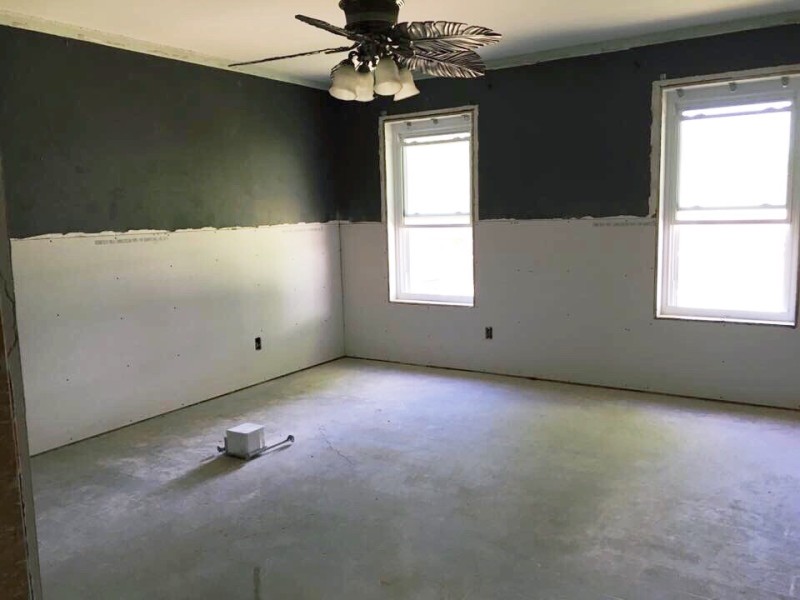 Lately, my free time is spent scouring Pinterest and channeling my inner Joanna Gaines like it’s my job. And in a way, I suppose it is. When life throws crazy, unexpected trials at you, you simply learn to deal. And in this situation, I feel like it’s my role or job to use this opportunity to make our home into the best place it can be for my family. We didn’t think we’d be doing a major renovation any time soon, though since we are, I feel like I need to do my best work. I need to think fast and creatively. I need to consider as many options as possible in a short amount of time and I need to employ my best ideas quickly. I need to think both inside and outside of the box and consider our big dreams and ideas while also being practical and focused on the schedule. I need to maximize our budget while not forgetting to splurge where most necessary. I need to think about how we’ve truly used this home over the last year and a half, and think about areas of improvement that we would have only dreamed about. I know, without a doubt, that I’m putting a lot of pressure on myself to do this quickly and efficiently. And obviously, when you’re forced to remodel without first planning for it, that will come with its fair share of headaches and strains. (Though, I could live without having a migraine every single day.) Nonetheless, I’ll figure all of this out and I’ll make it through. Matthew and I will be back in our beloved home before I know it, and hopefully, it’ll be beautiful and relaxing, just as we’re dreaming about now.
Lately, my free time is spent scouring Pinterest and channeling my inner Joanna Gaines like it’s my job. And in a way, I suppose it is. When life throws crazy, unexpected trials at you, you simply learn to deal. And in this situation, I feel like it’s my role or job to use this opportunity to make our home into the best place it can be for my family. We didn’t think we’d be doing a major renovation any time soon, though since we are, I feel like I need to do my best work. I need to think fast and creatively. I need to consider as many options as possible in a short amount of time and I need to employ my best ideas quickly. I need to think both inside and outside of the box and consider our big dreams and ideas while also being practical and focused on the schedule. I need to maximize our budget while not forgetting to splurge where most necessary. I need to think about how we’ve truly used this home over the last year and a half, and think about areas of improvement that we would have only dreamed about. I know, without a doubt, that I’m putting a lot of pressure on myself to do this quickly and efficiently. And obviously, when you’re forced to remodel without first planning for it, that will come with its fair share of headaches and strains. (Though, I could live without having a migraine every single day.) Nonetheless, I’ll figure all of this out and I’ll make it through. Matthew and I will be back in our beloved home before I know it, and hopefully, it’ll be beautiful and relaxing, just as we’re dreaming about now.
I’ve obviously been a bit quiet lately, and this post sort of indirectly mentions the tragedy we’ve experienced. Naturally, things have been a bit chaotic and that chaos has left me with few words for now. At first, I had no desire to write and now the words are starting to come back slowly. My thoughts still aren’t entirely clear, though I know the words will come back eventually. I’m sure I’ll share more about the flood eventually. For now, I’ll keep searching for my words and I’ll pop in and out here as they arrive.
Also, I just decided to track our rebuilding process through the 100 Day Project. Last year, I focused on crafty projects and this year I thought I’d use this time to showcase the rebuilding process. Feel free to follow along with #100daysofrebuilding on Instagram, if you’d like.
Currently.
 I’ve seen these “currently” posts all over the Internet and I’ve always loved them. It’s no secret that @elisejoy’s were always my favorite. Considering the awkward spot of life we’re in right now, I thought this might be a great time to try one of my own. So here goes.
I’ve seen these “currently” posts all over the Internet and I’ve always loved them. It’s no secret that @elisejoy’s were always my favorite. Considering the awkward spot of life we’re in right now, I thought this might be a great time to try one of my own. So here goes.
Currently I am:
rebuilding my house.
taking pictures of all the flowers.
thrilled that there’s Sheetrock back on my walls. (Seriously, so encouraging.)
choosing paint colors like its my job.
learning to live comfortably in a camper.
trying to find my words again.
being thankful for a place to live, for the opportunity to rebuild, and for amazing friends/family and strangers.
working hard and fast.
stalking Emily Henderson’s blog for design ideas.
adjusting to 1,000 new things and emotions.
driving my car with the sunroof open and music up loud. (Not right this second, obviously.)
enjoying little tiny moments that might have otherwise slipped by.
growing a real estate business.
eating way too much ice cream.
loving the warm sunshine.
embarking upon a few new adventures, in spite of the madness.
sending so many thank you cards.
waiting excitedly on the new season of The Unbreakable Kimmy Schmidt.
These are just a few of the things I’m doing currently. It’s no secret that our lives were turned upside down after the flood and for a bit, I struggled to bounce back. Each day it gets easier, and though I’m not back in a routine and my writing has suffered tremendously, I’m back at work and back at life. Each day gets a little easier and each day I feel a little more like my real self. We’re slowly finding our new normal. We appreciate the well wishes through the flood and for understanding as things have been a bit harder lately. Currently, I’m thankful to be deep into the recovery stage where I finally feel my head’s above water…both literally and figuratively, I suppose.
Since I’ve strayed from my regular Monday/Thursday blog posting schedule, feel free to keep up via Instagram @pamelapetrus for now.
